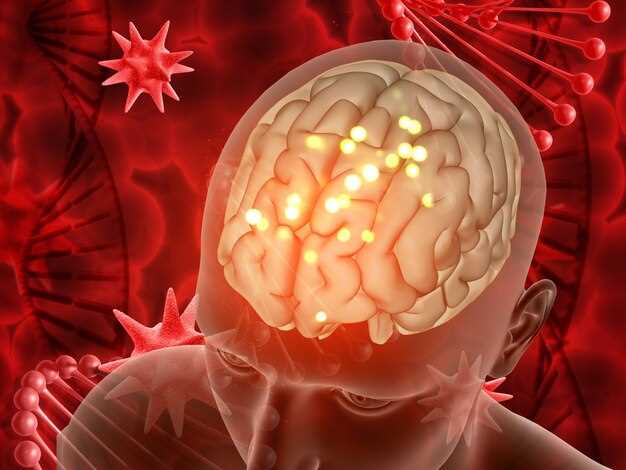
Losartan is a commonly prescribed medication for managing high blood pressure and heart conditions. However, a question that often arises is whether losartan has the ability to cross the blood-brain barrier, a protective barrier that separates the bloodstream from the brain.
Research suggests that losartan may indeed cross the blood-brain barrier, potentially opening up new possibilities for its use in treating neurological conditions. Stay tuned as we explore the latest findings on the intriguing topic of losartan and its interaction with the brain.
Understanding Losartan Mechanism
Losartan, a widely used medication for hypertension and other cardiovascular conditions, belongs to a class of drugs known as angiotensin II receptor blockers (ARBs). Its primary mode of action is by blocking the angiotensin II receptor, which prevents the hormone angiotensin II from exerting its effects on blood vessels, leading to vasodilation and reduced blood pressure.
Angiotensin II is a potent vasoconstrictor that causes narrowing of blood vessels, leading to increased blood pressure. By blocking the receptor, losartan helps to relax blood vessels and lower blood pressure, making it an effective treatment for hypertension.
Losartan’s Effects Beyond Blood Pressure
In addition to its role in regulating blood pressure, losartan has been found to have potential benefits for other conditions. Research has shown that losartan may have protective effects on the heart, kidneys, and blood vessels beyond its antihypertensive properties. This has led to investigations into the potential use of losartan in conditions such as heart failure, diabetic nephropathy, and even neurological disorders.
Understanding Losartan Mechanism
Losartan is an angiotensin II receptor antagonist that blocks the action of angiotensin II, a hormone that causes blood vessels to constrict. By inhibiting the angiotensin receptor, losartan helps to relax blood vessels and lower blood pressure.
How Losartan Works:
When angiotensin II binds to its receptor, it triggers a cascade of events that result in vasoconstriction and increased blood pressure. Losartan competes with angiotensin II for binding to the receptor, preventing its activation and thus dilating blood vessels.
Impact on Blood-Brain Barrier:
Research has shown that losartan has the potential to cross the blood-brain barrier (BBB), which is a selectively permeable membrane that separates the blood from the brain. This unique ability may have implications for the treatment of neurological disorders that involve the BBB.
Research on Losartan BBB Permeability

Research on the blood-brain barrier (BBB) permeability of losartan is a topic of increasing interest in the scientific community. The BBB is a highly selective semipermeable border that separates the circulating blood from the brain and extracellular fluid in the central nervous system. Understanding the ability of losartan to cross this barrier is crucial for evaluating its potential therapeutic effects on neurological disorders.
Losartan’s Ability to Cross BBB
Recent studies have provided evidence that losartan, a commonly prescribed angiotensin receptor blocker, may have the ability to penetrate the BBB. This has sparked further investigations into the mechanisms of losartan’s entry into the brain and its impact on neurological functions.
Studies have suggested that losartan may modulate the angiotensin pathway within the brain, influencing neural pathways and potentially offering neuroprotective effects. The ability of losartan to reach the brain could have significant implications for conditions such as Alzheimer’s disease, stroke, and other neurodegenerative disorders.
Implications for Neurological Disorders
Understanding the ability of losartan to cross the blood-brain barrier has significant implications for neurological disorders. The blood-brain barrier plays a critical role in protecting the brain from potentially harmful substances and maintaining brain health. If losartan is able to penetrate this barrier, it opens up new possibilities for the treatment of neurological conditions.
Neurological disorders such as Alzheimer’s disease, Parkinson’s disease, and stroke can benefit from drugs that can effectively reach the brain. Losartan’s potential to cross the blood-brain barrier may offer a novel approach to treating these conditions by targeting specific pathways involved in their progression.
Research exploring the impact of losartan on neurological disorders is ongoing, with studies investigating its neuroprotective effects and potential therapeutic benefits. By understanding its mechanism of action and ability to traverse the blood-brain barrier, scientists and clinicians can develop targeted treatment strategies for these complex conditions.
Comparative Analysis with other drugs

When comparing losartan with other drugs commonly used in the treatment of hypertension such as ACE inhibitors, calcium channel blockers, beta-blockers, and thiazide diuretics, losartan stands out for its unique mechanism of action. Unlike ACE inhibitors that inhibit the production of angiotensin II, losartan blocks the binding of angiotensin II to its receptor, thereby preventing its vasoconstrictive and hypertensive effects.
Furthermore, losartan has shown beneficial effects in patients with heart failure, diabetic nephropathy, and left ventricular hypertrophy, making it a versatile option for various cardiovascular conditions. Its ability to cross the blood-brain barrier and potentially offer neuroprotective effects also sets it apart from other antihypertensive agents.
